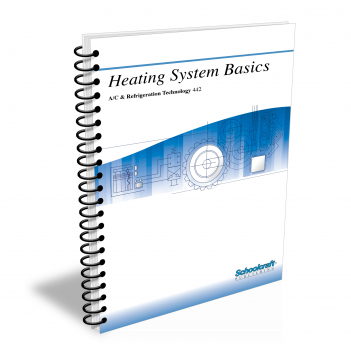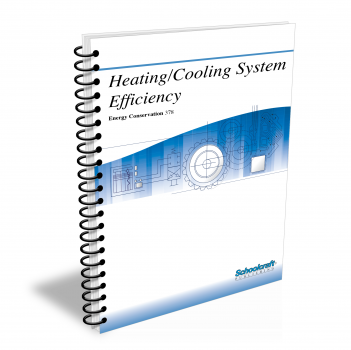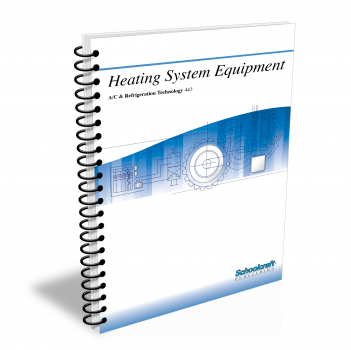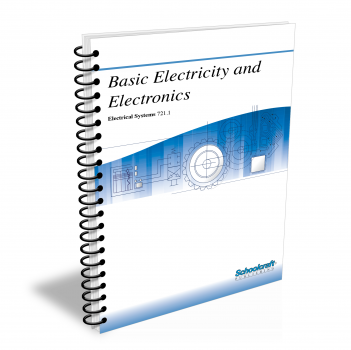Heating System Basics

Course Number: 442
The Heating System Basics textbook covers fundamental information on all types of heating systems. Begins with the concept of heat energy, heat transfer, and temperature scales. Examines factors affecting human comfort. Introduces all types of heating equipment and its operation. Includes a Lesson on combustion and thermal efficiency. Concludes with a chapter on duct systems.
Does your curriculum require additional topics not included in this textbook? Build a customized version of the Heating System Basics textbook below.
Recommended Contact Hours – 10
Preview a Chapter
Available Supporting Material
- Table of Contents
- Exam Copies
- Suggested Titles
Table of Contents
Chapter 1: Heat Energy
Topics: Heating system requirements; Heat and energy; Temperature; Sensible heat and latent heat; Heat transfer; Energy conversions; Electric motors
Learning Objectives:
- Name the three main requirements of heating systems and various kinds of energy related to heating systems.
- Define terms related to the basic concepts of heating systems.
- Describe differences between standard temperature scales and explain how to convert between Fahrenheit and Celsius scales.
- State the two basic laws of heat transfer and describe the three ways heat is transferred from one location to another.
- Explain how to convert between kilowatts (kW) and brake horsepower (bhp).
- Briefly describe various kinds of single-phase motors used in heating systems.
Chapter 2: Personal Comfort and Heat Distribution Systems
Topics: Personal comfort; Humidity; Humidifiers; Heat delivery systems; Forced-air furnaces; Heat pumps; Hot water heating systems; Room heating panels
Learning Objectives:
- Discuss the effects of temperature, humidity, and air velocity on personal comfort.
- Describe various kinds of humidifiers used in furnaces.
- Describe the basic operation of a forced-air furnace.
- Discuss the use of heat pumps.
- Explain the main difference between forced-air and hot water (hydronic) heating units.
- Describe the basic operation of floor, wall, and ceiling heating panels.
Chapter 3: Combustion
Topics: Combustion facts; Combustion reactions; Heating value; Compensation for altitude; Fuel classification; Solid, liquid, gaseous fuels; Thermal efficiency; Combustion products as pollutants
Learning Objectives:
- Define combustion and describe what happens to the fuel and oxygen supplied during the process.
- Describe characteristics of stoichiometric combustion and discuss problems associated with incomplete combustion.
- Define the terms ignition temperature, upper and lower flammability or explosive limits, higher and lower heating values, and flash point.
- Discuss the general differences between solid, liquid, and gaseous fuels and describe their characteristics.
- Explain how thermal efficiency applies to heating systems.
Chapter 4: Chimneys and Venting
Topics: Chimney and gas venting terminology; Need for combustion air; Draft control methods; Basic chimney requirements, operation factors; Gas, oil-fired furnace venting; Fireplace chimneys; Vent and chimney accessories
Learning Objectives:
- Define terms related to chimneys and venting.
- Describe several methods of draft control used on chimneys.
- Discuss factors that affect chimney operation.
- Discuss the relationship between chimney height and draft and explain why correction factors may be needed.
- Discuss the basics of gas furnace venting and oil furnace venting.
- Discuss the general principles affecting the operation of fireplaces and their chimneys.
Chapter 5: Forced-Air Duct Systems
Topics: Duct system basics; Forced-air system components; Supply outlets; Duct dampers; Damper motors and actuators; Blowers (fans); Duct system pressure, integrity, design
Learning Objectives:
- Explain how the duct system delivers warm air throughout the building and describe two common ductwork layouts.
- Describe the various components of the duct system and explain why centrifugal blowers are preferred within the system.
- Discuss pressure variations within the duct system and explain how manometers and pitot tubes are used to measure pressure.
- Discuss the importance of duct system integrity as it relates to system efficiency and name factors that contribute to this integrity.
- Describe typical duct system designs and explain how the equal friction method is used.
Request Exam Copies
Exam Copies
Ready to see a copy of our textbooks? After selecting which textbooks you’d like to review for your course, you can submit your request by either logging in or creating an account so we know where to ship your exam copies. A representative from Schoolcraft will contact you to confirm and finish processing your request.
Exam copies are always free and yours to keep.
Selected Exam Copies
none selected
* Maximum of five copies can be ordered




